Swivel Hoist Rings are an excellent choice for lifting or relocating heavy machinery, workpieces, and other objects. In this video, we'll delve into the various components of a swivel hoist ring, how they function, and why they're a superior option compared to other lifting points. Make sure to watch until the end for crucial safety tips.
Anatomy of a Swivel Hoist Ring
A swivel hoist ring comprises several key load-bearing parts that work together to ensure safe and efficient lifts.
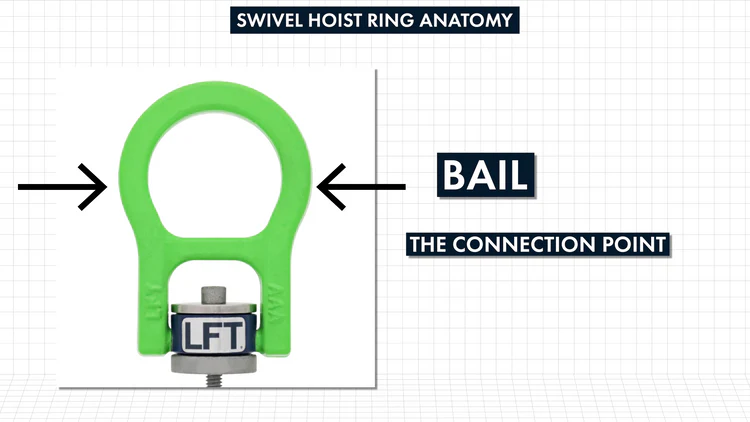
The first component we'll discuss is known as the 'bail'. The bail is drop-forged for strength and serves as the connecting point. Any lifting component attached to the bail must fit snugly within the opening to prevent binding. The bail features protruding lugs that lock into the body for a secure pivoting connection.

The body rotates around the bushing and is secured in place by the load-bearing washer. Slight clearances are designed into the body to allow it to move freely once the hoist ring is properly torqued.
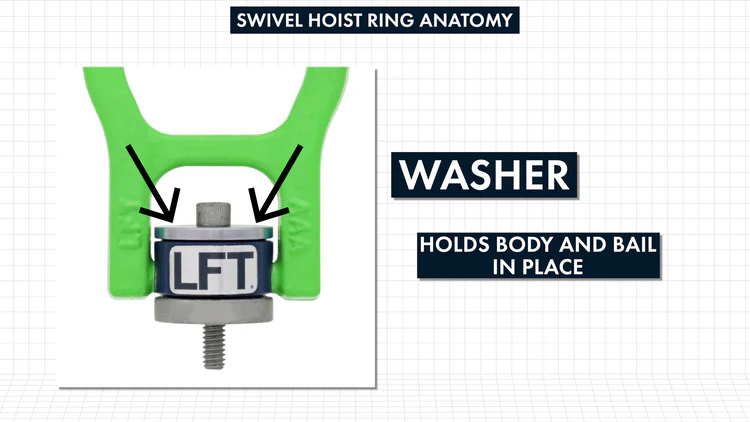
The washer keeps the body and bail in place once the bolt is tightened. It also displays critical product data such as the part number, serial number, rated load, and recommended torque specifications.
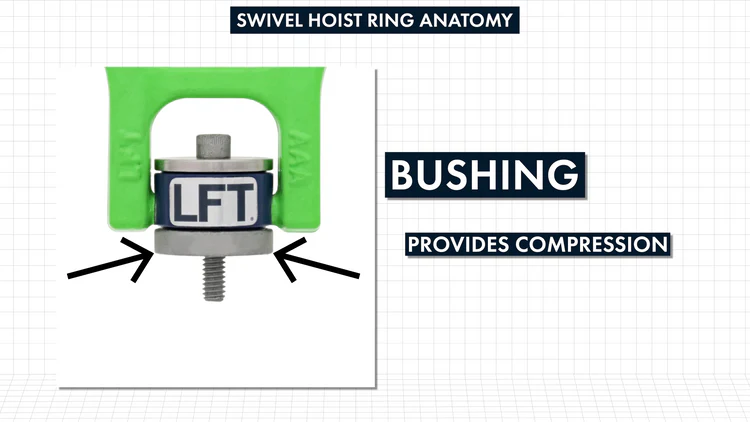
The bushing provides the necessary compression to the surface of the object being lifted, allowing the hoist ring to rotate freely without loosening the bolt during the lift. The bushing is designed with a broad enough base to support 100% of the rated capacity for inline loads and up to 90-degree angled loads.
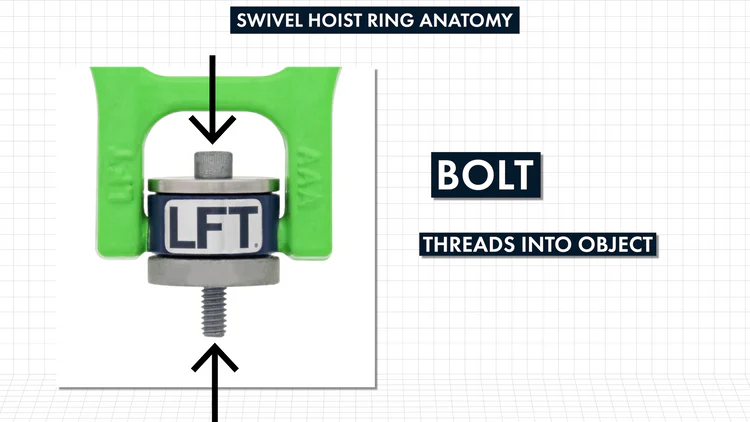
The bolt provides sufficient holding strength when correctly torqued, enabling the hoist ring to rotate freely without the bolt loosening during the lift. The thread engagement of the bolt must be at least 1.5 times the bolt diameter. The torque values are clearly marked on the hoist ring and are intended for clean, dry threads.
How Swivel Hoist Rings Operate
Swivel hoist rings serve as a flexible lifting point that offers multidirectional articulation, making them perfect for complex lifting tasks.
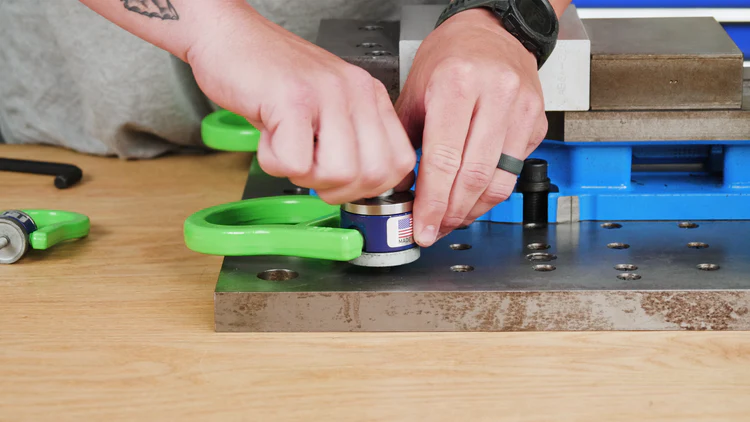
Because the bolt, bushing, and washer provide tension and compression, they're rated for 100% of the working load capacity across the full range of the hoist ring's ability to pivot and rotate, provided the swivel hoist ring isn't bound.
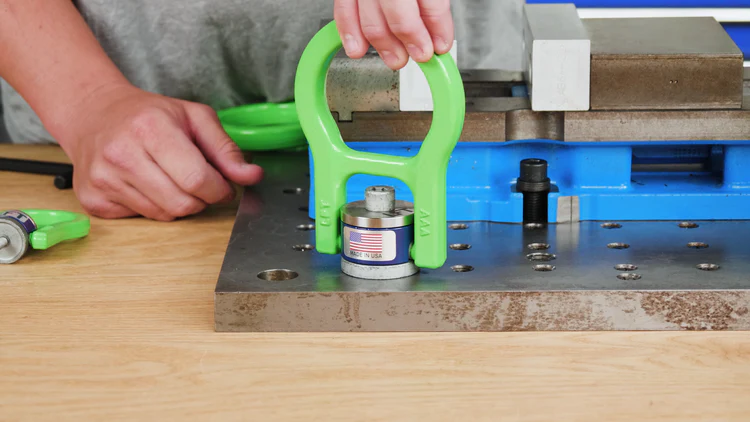
It's important to note that swivel hoist rings are not meant to rotate under load. Instead, the "swivel" part of the name refers to their ability to pivot and rotate while loading. This self-alignment capability provides an unobstructed in-line load path for the rest of the rigging assembly.
Comparison with Other Lift Points
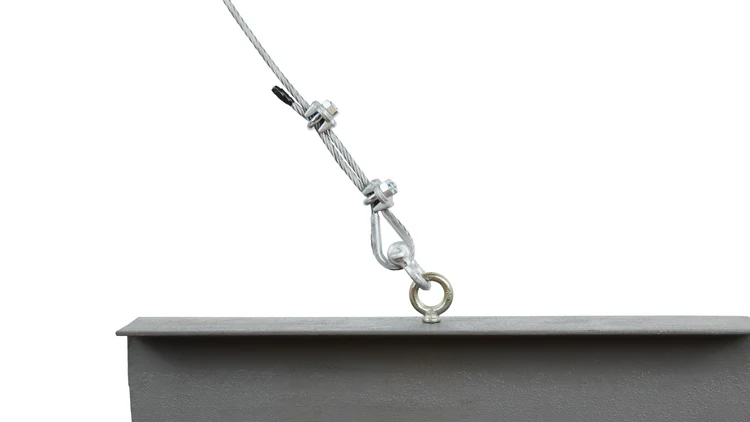
Traditional lift points, such as machinery eyebolts, are limited in functionality due to their reduced load capacity at different angles of attachment. Swivel hoist rings, on the other hand, can be used for a wide variety of lifting applications and aren't as restricted by angled loading.
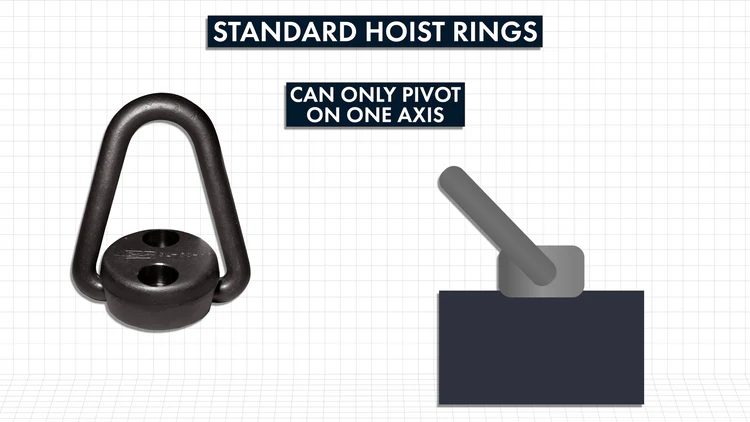
Conventional hoist rings can be an option to increase the angle of attachment, but they can only operate on one plane of motion.
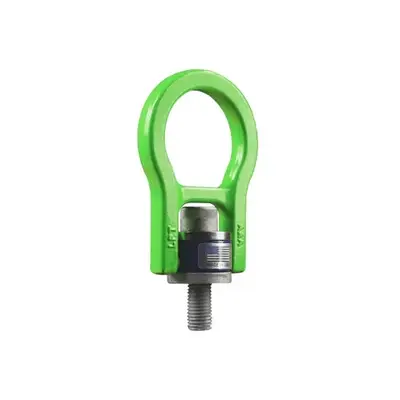
In contrast, unlike traditional hoist rings which hinge on one axis, swivel hoist rings provide multidirectional movement around different axes, making them ideal for complex lifting tasks like multi-leg lifting.

Moreover, swivel hoist rings offer broader compatibility with various lifting components, including safety hooks, chain slings with multiple legs, web slings, round slings, wire rope slings, and soft ropes. If you require a hoist ring that can rotate and align to different angles while minimizing stress on lifting assemblies, swivel hoist rings are the ideal choice.
Swivel Hoist Safety
Proper installation of swivel hoist rings is essential, as incorrect installation and usage can result in lift failure and unsafe working conditions.

You should regularly inspect all parts of each hoist ring for signs of wear and damage. Additionally, periodically check the torque requirements for the bolt, as bolts can loosen over time in extended service.

When installing swivel hoist rings, always tighten the bolt to the manufacturer's specified torque values. Adhering to these torque guidelines ensures proper tension on the bolt, allowing your hoist ring to operate at its full listed working load capacity.
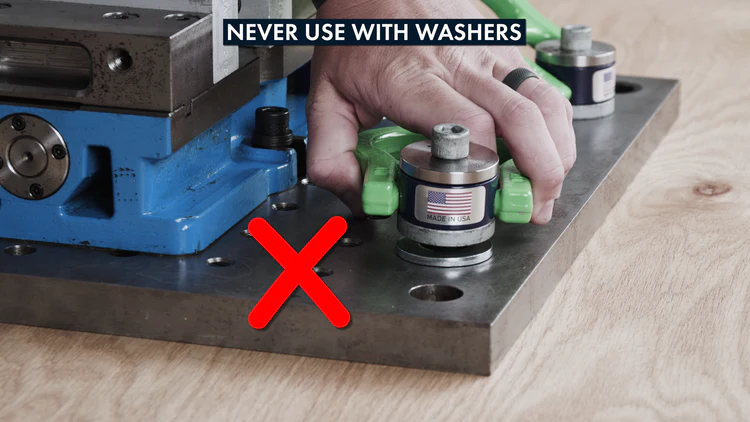
Never install a washer or spacer between the bushing and the surface of the object being lifted. The bushing of the hoist ring should be in full contact with the surface of the item being lifted.
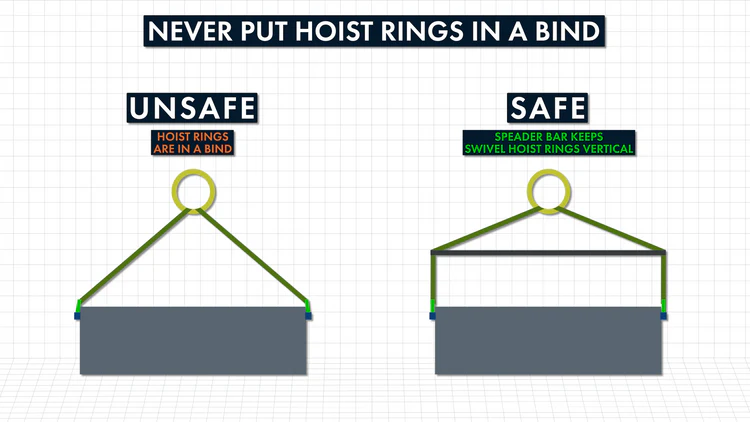
It’s crucial to avoid putting your swivel hoist ring in a bind. Use spreader bars if necessary to prevent the bail from binding against the workpiece and to ensure even load distribution.
For more details on swivel hoist rings, check out our Hoist Ring Guide. If you have any questions or need further assistance, feel free to reach out!UV Marble Sheet,UV PVC board for wall,PVC Marble Wall sheet,3D Marble wall sheet
Linyi Dongtai Decoration Materials Co., Ltd , https://www.dongtaiwood.com
